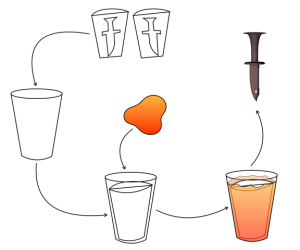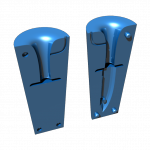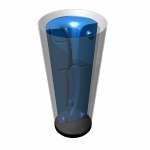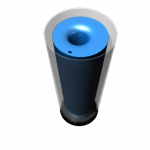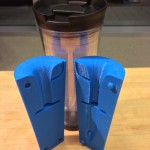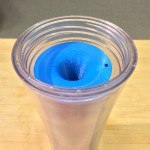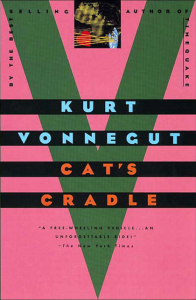 Ice-9 is a polymorph of water that melts at 45.8 ºC, that appears in Kurt Vonnegut’s “Cat’s Cradle”. When it comes into contact with liquid water under 45.8 ºC, it acts as a seed crystal that eventually turns the whole water into ice.
Ice-9 is a polymorph of water that melts at 45.8 ºC, that appears in Kurt Vonnegut’s “Cat’s Cradle”. When it comes into contact with liquid water under 45.8 ºC, it acts as a seed crystal that eventually turns the whole water into ice.
This is what was envisioned by renowned sci-fi satire author Kurt Vonnegut in his famous book Cat’s Cradle. In the book, Vonnegut imagined ice-nine as a doomsday plot device, a material that when put into the wrong hands could freeze the entire planet over instantly and kill all life.
Inspired by ice-nine, we began to wonder what we could do if we had a material that could transition from liquid to solid states on command. Here the idea of futuristic spy tools was born…
We see this fictional material as more than a killing tool, we see it as a future of fabrication and manufacturing. For example, we can use this state-changing property for instantly making hand tools out of the liquid. What if the liquid can transform into a certain functional shape e.g. weapons, tools, or anything, and more importantly, at the moment we need them? This could be revolutionary for personal fabrication, yet it also makes for a good science fiction technology.
The process is illustrated above: first we envision that a cup is designed integrated with a mold of an object (tool) contained discretely on the inside. The cup can be filled with the “ice-nine” liquid to appear that the person is merely enjoying a soft drink, tea or coffee. When ready, the user can agitate the solution or drop a seed crystal into the cup, causing the material to change into solid state instantly. When the solution hardens, the user can pull out and crack open the mold to reveal the cast of a ready-to-use object.
Drawing from the influence of spy novels and James Bond movies, we envision the spy who needs a tool to open a secret cabinet inside an embassy, or an assassin who has to sneak in a weapon past metal detectors.
After doing some research, we had a good candidate for a material that fit these properties: sodium acetate. This food-grade compound has a property that was very interesting to us: when at room temperature, it acts as a super-cooled liquid. That is, at room temperature the compound would prefer to be a solid, but if it is in pure form, it will not crystalize at room temperature unless a seed crystal is introduced. This was exactly what we were looking for!
For a proof-of-concept, we designed a tool and a weapon mold in Rhinoceros. One would integrate with a coffee cup, the other would go into a team tumbler, respectively. Here’s a 3D model sketch of the knife design
We fabricated the designs using a 3D printer, and here are the results of what we made (a knife and a wrench):
Finally we had a chance for some experimentation
We envision that, if we can have robust control over the crystalization and supercooling, a liquid with this state-shifting property could enable a new wave of personal product manufacturing. It doesn’t require much external energy for the printing process, and this method has the ability to turn into final shapes very quickly. As a practical application, we can always carry the liquid and the molds for different hand tools, and whenever there is immediate need, we can always turn the liquid into the tool we need and turn it back to liquid after use. General-purpose liquid for creating and recycling tools, like omni-gel seen in the video game Mass Effect.
Ermal Dreshaj and Sang-won Leigh

